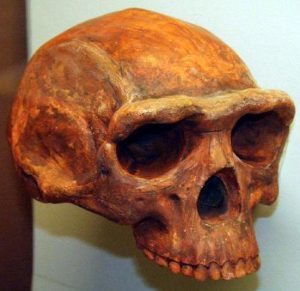
Homo erectus was an ancient human ancestor that lived between 2 million and 100,000 to 50,000 years ago. It had a larger body and bigger brain than most earlier human ancestors. Although recent debates revolve around how we classify these fossils, and whether they should be broken down into lots of smaller sub-groups, it is generally agreed that Australopithecines in Africa pre-dated the advent of the Homo lineage. Predecessors to Homo erectus, include Homo habilis (“handy man”), a much smaller specimen.
Compared with modern Homo sapiens, which have only been around for the last 200,000 years, Homo erectus, or “upright man,” was very “successful” in a biological sense and lived on the Earth for 10 – 20 times longer than modern humans have been around.
Fossils of H. erectus show that it was the first human ancestor to live outside of Africa – one of the first fossils found was unearthed in the 19th century in Indonesia – others have been found across Asia, including China, as well as Europe and Africa.
A recent interesting summary of information about Homo erectus can be read at http://www.livescience.com/41048-facts-about-homo-erectus.html. OpenSTEM also has a PDF resource on Homo erectus (part of our Archaeology Textbook for Senior Secondary).
Get Hands-On!

If you’re in the greater Brisbane area and would like to have your students touch, compare and otherwise explore human ancestor skulls – talk to us! OpenSTEM has a growing range of 3D printed fossil skulls and our resident archaeologist Dr Claire is available for workshops at primary and high school level (such as Introduction to Archaeology and Fossils).


My 9 year old son fell in love with all the aspects of this program - the simple but still…
Cara, Parent